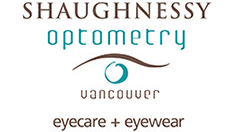 Glaucoma is often associated with adults. In rare cases, however, a child can be born with glaucoma, or the condition can develop later in childhood. Childhood glaucoma— also referred to as congenital glaucoma, pediatric, or infantile glaucoma—can cause significant vision loss if not treated promptly.
Glaucoma is often associated with adults. In rare cases, however, a child can be born with glaucoma, or the condition can develop later in childhood. Childhood glaucoma— also referred to as congenital glaucoma, pediatric, or infantile glaucoma—can cause significant vision loss if not treated promptly.
If your family has a history of glaucoma or if someone you love is struggling with the sight-robbing disease, your eye doctor at Shaughnessy Optometry LASIK & Cataract Surgery Center in Vancouver can help.
What is Glaucoma?
Glaucoma is an eye condition that damages the optic nerve by causing high pressure inside the eye. The disease typically affects people over 60, but as mentioned above, in rare cases, young children and babies can have this condition due to incorrect development of the eye’s drainage system before birth.
In adults, the onset of glaucoma is usually gradual and may not show symptoms in its early stages. Damage and vision loss caused by glaucoma can’t be reversed, but the progression of the disease can be slowed through various treatments.
Symptoms of Childhood Glaucoma
Symptoms of childhood glaucoma include:
- One eye appears larger than the other
- Light sensitivity
- Frequent tearing
- Cloudiness on the surface of the larger eye
- Diminished vision, especially peripheral vision
What Is Developmental Glaucoma?
Developmental Glaucoma is an umbrella term for glaucoma that occurs in babies, young children and teenagers.
There exist two main forms of developmental glaucoma:
- Congenital glaucoma: affects babies and children under the age of three
- Juvenile glaucoma (or early-onset glaucoma): affects children and young adults over the age of 3
Childhood glaucoma can be caused by prenatal defects in the eye’s internal drainage system. If the eye can’t drain fluid, it builds up, eye pressure increases and the optic nerve becomes damaged.
Developmental glaucoma can also result from other conditions, including:
- Axenfeld-Reiger syndrome
- Sturge-Weber syndrome
- Peters anomaly
- Aniridia
- Juvenile rheumatoid arthritis
- Marie-Strumpell ankylosing spondylitis
Monitoring and Treatment
Developmental glaucoma can start shortly after birth and is often detected during the child’s first eye exam.
Children born to a family with a history of glaucoma should undergo routine eye exams to monitor eye (intraocular) pressure.
If your child is diagnosed with glaucoma, the eye doctor will likely prescribe eye drops or oral medication to lower intraocular pressure with the goal of either increasing the exit of fluid from the eye or decreasing the production of fluid inside the eye. However, in some instances, these treatments may not suffice, and surgery will be required to control the pressure and prevent vision loss due to glaucoma.
Surgery for Childhood Glaucoma
Your eye doctor at Shaughnessy Optometry LASIK & Cataract Surgery Center in Vancouver provides glaucoma management to enable children with glaucoma live full lives. Although lost vision cannot be restored, surgery and other treatment modalities can help maximize a child’s remaining vision.
The two preferred surgeries for developmental glaucoma are:
- Trabeculectomy - removes a small amount of tissue to create an opening so fluid can drain from the eye and relieve pressure.
- Goniotomy - removes any tissue blocking the drainage and forms a new channel to allow fluid to drain more easily.
In both surgeries, the patient will be given ‘twilight’ anesthesia, meaning the child remains awake but not responsive. The surgeon will clean the eye, numb it and use an instrument to keep the eyelids open.
The child may see lights but should not feel any pain during surgery. Following surgery, the child must wear a clear plastic shield over the surgically repaired eye to protect it.
What to Expect After Glaucoma Surgery
After surgery, the patient should experience reduced eye pressure. The eye doctor may prescribe steroid or antibiotic eye drops and possibly stop glaucoma medications.
While the purpose of surgery is to lower the pressure in the eye, it can’t cure glaucoma. If the initial surgery is successful, it can often keep eye pressure within the normal range for anywhere from 6 months to several years. At times, a follow-up surgery is required.
If your child has symptoms of glaucoma, such as irregular eye size, cloudy patches or light sensitivity, make sure to schedule an eye exam to test for glaucoma by contacting Shaughnessy Optometry LASIK & Cataract Surgery Center in Vancouver.
Q&A
Q: How are eye diseases diagnosed?
A: Depending on the stage they're in, eye diseases can appear with or without symptoms. Severe eye diseases, such as glaucoma, cataracts and macular degeneration, are diagnosed using a combination of tests. These include a general comprehensive eye exam, as well as a review of your medical history and risk factors. Subsequent tests, whether to measure eye pressure or something else, will depend on the results of your initial test.
Q: Can childhood glaucoma be cured?
While congenital glaucoma is not completely reversible, it can be controlled, and total vision loss could be prevented. With early treatment, babies with congenital glaucoma can maintain some degree of vision, and some may even have excellent vision. Glaucoma surgery is usually the first line of treatment since eye drops are not always effective in permanently reducing intraocular pressure.
